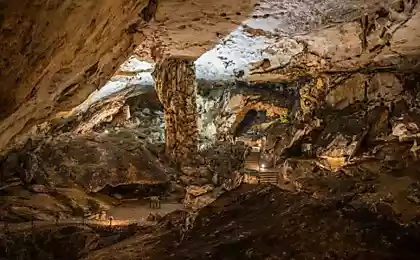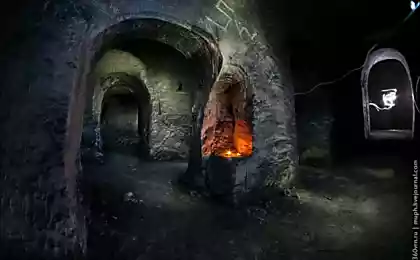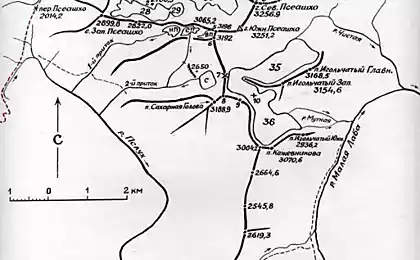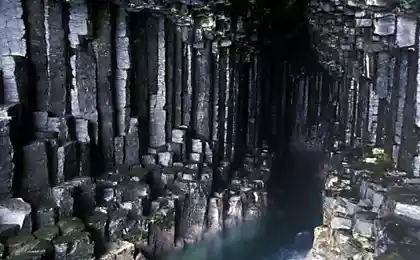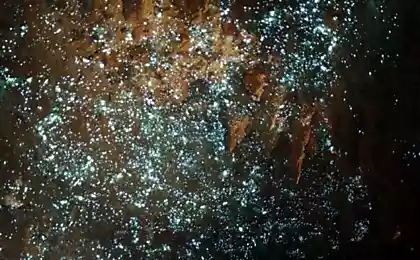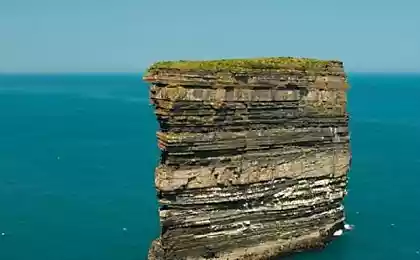612
The cave of Fingal on the island of Staffa
Staffa is one of the Inner Hebrides, lying at the Scottish coast of the United Kingdom, is located about 10 km West of mull, and 9 km North-East of the island of Iona. It is longitudinally oriented North to South, a mile long, about half a kilometer in width. In the North-East of the island sloping to the shore, but the rest of the coast is very indented and has numerous caves created by the rain, streams and ocean. The island has enough grass to feed a number of cattle, which is contained on the island.
The most famous landmark of Staffa is Fingal's cave — a large sea cave located near the southern tip of the island, about 20 meters high and 75 meters long formed in cliffs of lined up close to each other the basaltic columns of regular shape, from three to octagonal, more often all – Allen. In fact, the origin of these slender columns now what: rapidly thrown up lava slowly cooling down, crystallized, taking the current form.
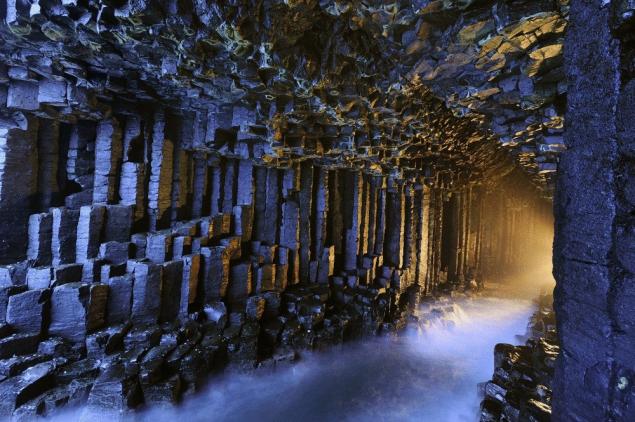
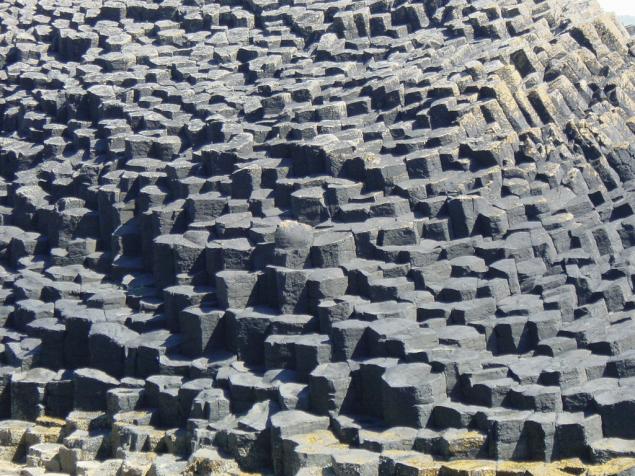
The huge hall of the cave repeatedly repeats the sounds of the surf, and the whole cave is literally sings, justifying its ancient name Uamh-Binn – the “Singing cave”.
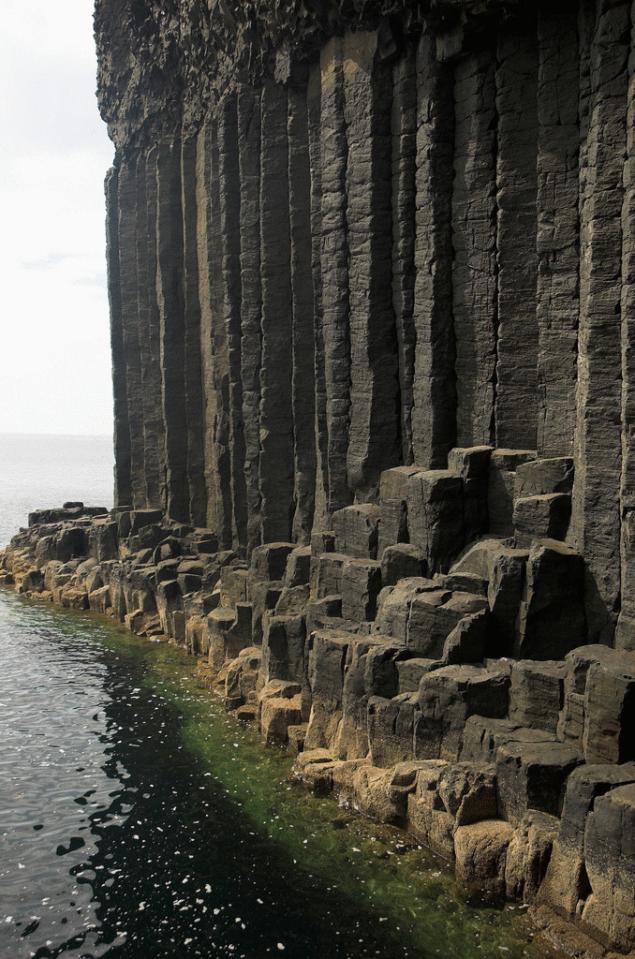
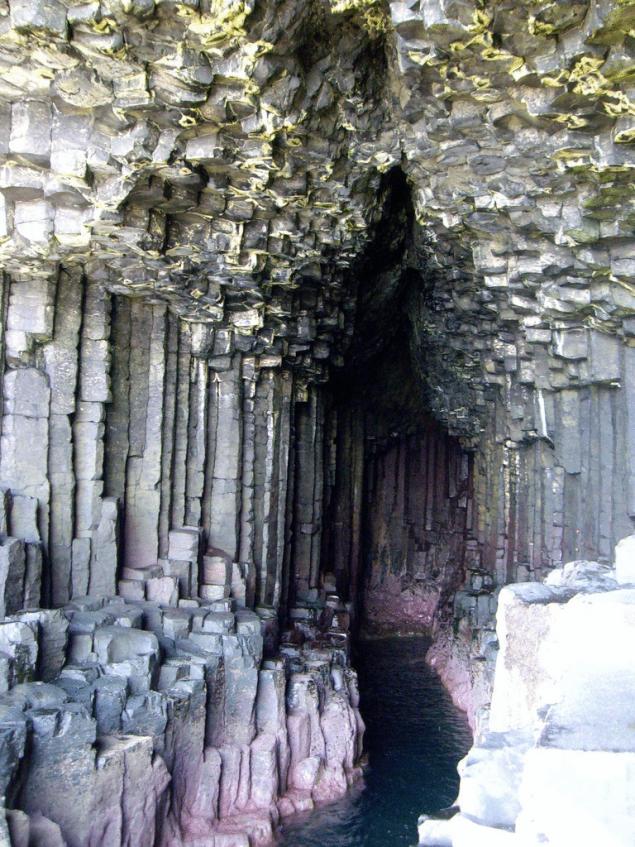
After 1722, the naturalist Joseph banks described the cave of Fingal, it was visited by Queen Victoria, Walter Scott, William Wordsworth, John Keats, Alfred Tennyson, Jules Verne. In 1832 the painter Joseph Turner wrote landscape, which captured the famous cave.
When the composer Felix Mendelssohn (author of the famous Wedding March) in 1829, visited the cave, he was so impressed by the amazing play of echo in its halls, it inspired him to write the Overture, entitled "the Hebrides or Fingarova cave".
The cave of Fingal is a narrow trail, surrounded by the magnificent basalt colonnade. A passage in the cave is so narrow that to get there by boat impossible.
The main hall of the cave of Fingal has a length of 75 m, a width of 20 m and a height of 14 m. In Gaelic this cave was called UAM-Bin (Cave sounds). Its name in honor of the epic hero of Fingal (Finn mackula) the cave has received from the Scottish poet James MacPherson. According to Irish legend, the giant Fingal, a dam was built connecting Scotland and Ireland.
The cave of Fingal is not the only place where these amazing basalt columns. About 40 000 of related columns form the giant's Causeway (which was also part of the dam built by the Black eye) in the coastal strip of County Antrim, located in the North-East of Ireland.
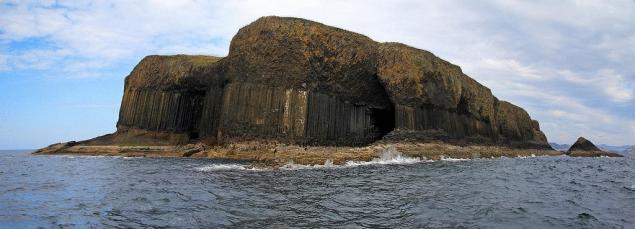
Fingal (the name can be translated as "White wanderer") is one of the favorite characters of Celtic epic. According to one legend he going to fight with a terrible giant Benandonner, built a huge bridge-a dam and lay down before the battle to relax. While he slept, a giant in search of his enemy he came across the bridge to his house. But the wife of Fingal, the UN tricked the giant. She pointed to the sleeping black, covered with a blanket, and said it was his newborn son, and that the black house now, no. Seeing the giant "baby", the giant has experienced such horror that ran away, destroying a dam.
There are several versions of this legend, but every time she ends a cowardly escape of the enemy of Fingal and the destruction of the dam. Magnificent basalt columns that according to legend, is the remains of piles driven into the bottom of the Irish sea a Black eye.
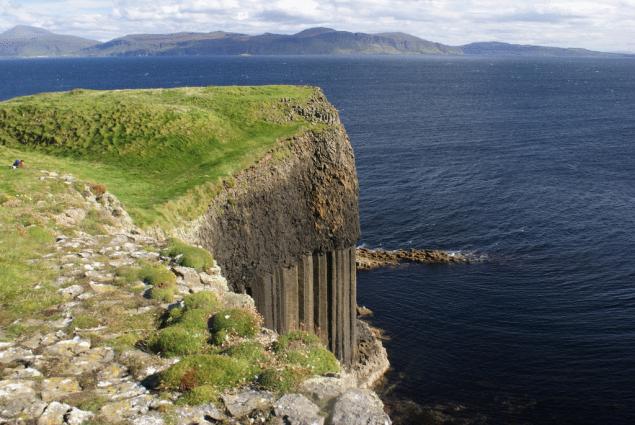
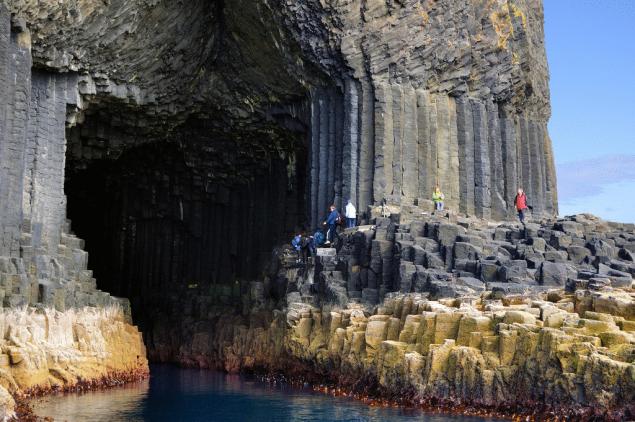
Source: /users/276
The most famous landmark of Staffa is Fingal's cave — a large sea cave located near the southern tip of the island, about 20 meters high and 75 meters long formed in cliffs of lined up close to each other the basaltic columns of regular shape, from three to octagonal, more often all – Allen. In fact, the origin of these slender columns now what: rapidly thrown up lava slowly cooling down, crystallized, taking the current form.


The huge hall of the cave repeatedly repeats the sounds of the surf, and the whole cave is literally sings, justifying its ancient name Uamh-Binn – the “Singing cave”.


After 1722, the naturalist Joseph banks described the cave of Fingal, it was visited by Queen Victoria, Walter Scott, William Wordsworth, John Keats, Alfred Tennyson, Jules Verne. In 1832 the painter Joseph Turner wrote landscape, which captured the famous cave.
When the composer Felix Mendelssohn (author of the famous Wedding March) in 1829, visited the cave, he was so impressed by the amazing play of echo in its halls, it inspired him to write the Overture, entitled "the Hebrides or Fingarova cave".
The cave of Fingal is a narrow trail, surrounded by the magnificent basalt colonnade. A passage in the cave is so narrow that to get there by boat impossible.
The main hall of the cave of Fingal has a length of 75 m, a width of 20 m and a height of 14 m. In Gaelic this cave was called UAM-Bin (Cave sounds). Its name in honor of the epic hero of Fingal (Finn mackula) the cave has received from the Scottish poet James MacPherson. According to Irish legend, the giant Fingal, a dam was built connecting Scotland and Ireland.
The cave of Fingal is not the only place where these amazing basalt columns. About 40 000 of related columns form the giant's Causeway (which was also part of the dam built by the Black eye) in the coastal strip of County Antrim, located in the North-East of Ireland.

Fingal (the name can be translated as "White wanderer") is one of the favorite characters of Celtic epic. According to one legend he going to fight with a terrible giant Benandonner, built a huge bridge-a dam and lay down before the battle to relax. While he slept, a giant in search of his enemy he came across the bridge to his house. But the wife of Fingal, the UN tricked the giant. She pointed to the sleeping black, covered with a blanket, and said it was his newborn son, and that the black house now, no. Seeing the giant "baby", the giant has experienced such horror that ran away, destroying a dam.
There are several versions of this legend, but every time she ends a cowardly escape of the enemy of Fingal and the destruction of the dam. Magnificent basalt columns that according to legend, is the remains of piles driven into the bottom of the Irish sea a Black eye.


Source: /users/276








